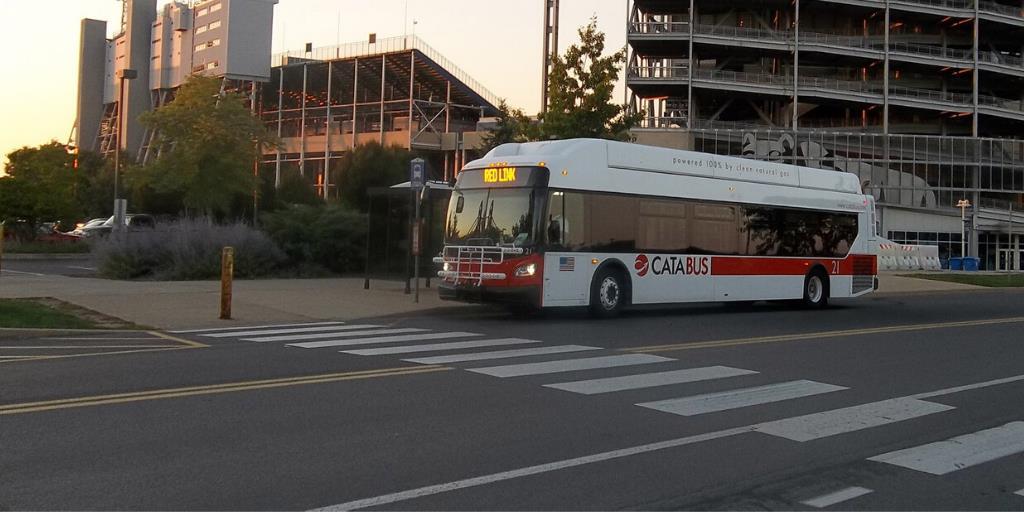
Public transportation agencies in Pennsylvania have continued operating through the COVID-19 pandemic. Although services are limited, transit is considered part of the public health response to COVID-19, transporting essential workers to their jobs and providing access to essential services, like healthcare.
In addition to reducing service, transit agencies have responded to the pandemic by:
- Some fixed route agencies have implemented free fares to reduce driver interactions with riders;
- Shared ride continues to provide essential trips. PennDOT has provided the ability for agencies to offer free fares, alter service areas temporarily, and have same-day service in some places to make it easier for those who really need it to use the service;
- Many agencies are asking drivers and passengers to wear face coverings;
- Agencies are limited the number of passengers on busses and requiring rear door entry.
FTA is allocating $25 billion to recipients of urbanized area and rural area formula funds, with $22.7 billion to large and small urban areas and $2.2 billion to rural areas. Funding will be provided at a 100-percent federal share, with no local match required, and will be available to support capital, operating, and other expenses generally eligible under those programs to prevent, prepare for, and respond to COVID-19.
Pennsylvania will receive $1.1 billion in federal CARES Act funding for public transportation. The department is working with the transit agencies and the Federal Transit Administration to apply for and make sure the funding is in the hands of the agencies.
The CARES Act provides $10 billion in funds to be awarded as economic relief to eligible U.S. airports affected by the prevention of, preparation for, and response to the COVID-19 pandemic. The Bureau of Aviation administers 40 general aviation airports that are eligible to receive federal funding and are part of the State Block Grant Program. These airports are slated to receive 100% funding for their FFY 2020 appropriations through the CARES Act.
ABOUT THIS BLOG
Did you know PennDOT is directly responsible for nearly 40,000 miles of highway and roughly 25,000 bridges? We oversee programs and policies affecting highways, urban and rural public transportation, airports, railroads, ports and waterways, in addition to administering the state's more than 11 million vehicle registrations and 8.8 million driver's licenses.
So, how do we do what we do? And how can we help you travel in Pennsylvania — whether it be for business or leisure — in safe and enjoyable manner? Read PennDOT Way to learn more about the department, what we do, and how and why we do it.
TAGS
50-Year Anniversary, 511PA, Aggressive Driving, Airports, Autonomous Vehicles, Bicycles, Bridges, Child Safety, Community Relations, Construction, COVID-19, Distracted Driving, District 1, District 10, District 11, District 12, District 2, District 3, District 4, District 5, District 6, District 8, District 9, DOTcom, Driver and Vehicle Services, Emergency Responders, Employment, Equity, FAQ Friday, Human Trafficking, Impaired Driving, Innovations, Live Free Ride Alive, Maintenance Monday, Motorcycles, Older Drivers, PA Motorcycle Safety Program, Pedestrians, PennDOT Connects, Ports, Public Transit, Railroads, REAL ID, Road MaP, Roadside Beautification, Rural Roads, Safety, School Buses, Seat Belts, State Transportation Innovation Council (STIC), Sustainability, Teen Drivers, Throwback Thursday, Transportation Funding, Travel in PA, Welcome Centers, Winter, Work Smart, Work Zone, Yellow Dot
LATEST POSTS
PennDOT Continues Sharing, Updating Resources for Local Governments to Pursue Bipartisan Infrastructure Law Funding Opportunities
Norwin High School Wins 2024 ‘Innovations Challenge’
Demo Complete: I-95 CAP Project in Center City Philadelphia
PennDOT Archeologist Connects Past, Present, and Future
Lehigh Valley DUI, Highway Safety Task Force Hosts Law Enforcement Seminar
ARCHIVES
2024
2023
2022
2021
2020
2019
2018
2017

